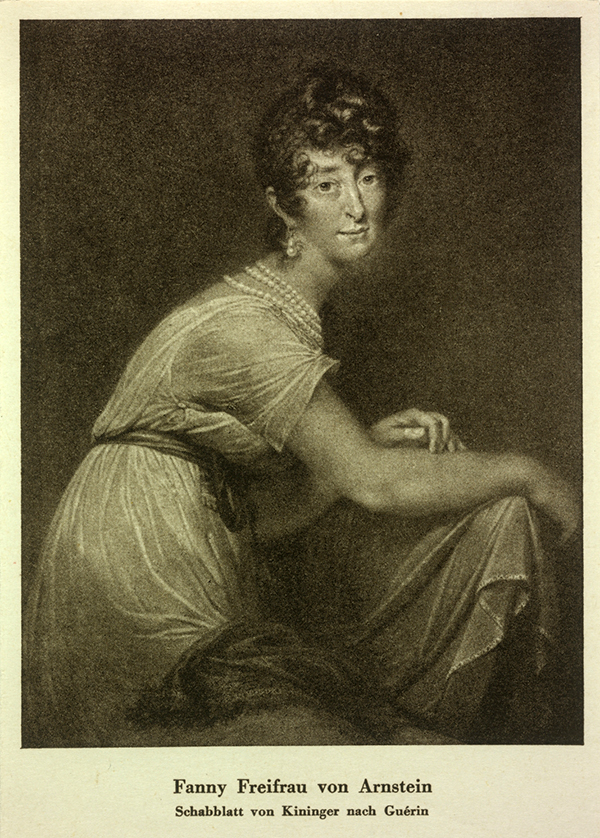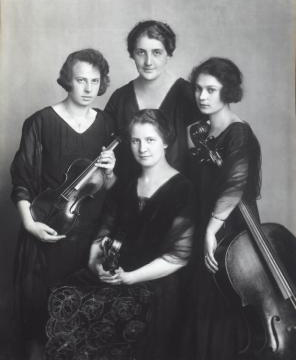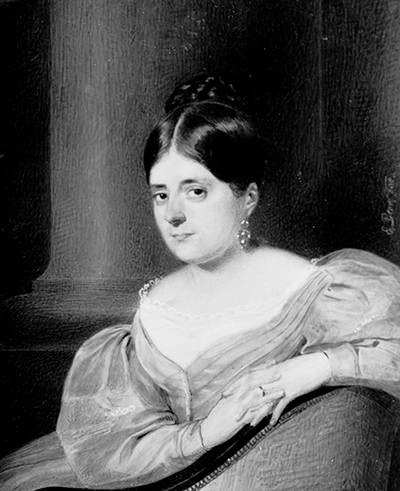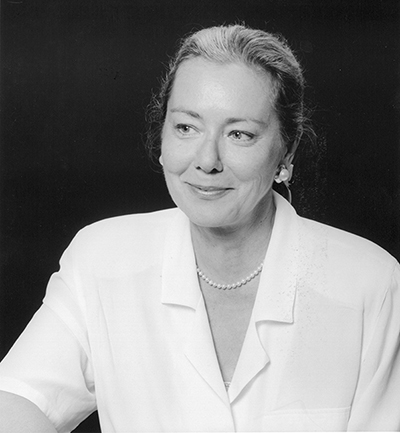The virtual platform spiel|mach|t|raum1 is a jubilee project of the mdw that seeks to lend women*, who have historically been underrepresented to a gross extent at top-level institutions of arts education such as the mdw, better visibility. The contents of this virtual platform are based upon the synonymous mdw exhibition held back in 2011, which was conceived by twelve female and two male mdw faculty members as well as a female gender researcher from outside the university.

The current, still-large imbalance between men and women in leadership positions in the overall field of music (meaning both art music and popular music) is owed not insignificantly to the gender-makeup of the teaching staff at top-tier institutions of music education (these being the European conservatories of music founded from the late 18th century onward), for it was long the case that such institutions had very few women in teaching positions. The strict, bourgeois ideological dichotomy between private and public life entailed that (bourgeois) women, whom the prevalent worldview relegated (and/or still relegates) to the private sphere, were (and/or are) subjected to far greater constraints in public than men—and hence were rarely able to pursue a well-regarded, bourgeois profession or other paid work outside the home. In keeping with this bourgeois separation of the sexes, it was also taken for granted that there could only be single-sex musical ensembles. And since conservatory instructors were recruited from the best-regarded orchestras (which, for their part, were men’s orchestras), hardly any women musicians were accepted as instructors at what was then the Conservatory of Music and Performing Arts Vienna.
To set the tone for the diverse and varied insights on 200 years of women in Music*Theatre*Film at the mdw that await visitors to this virtual platform, we would like to take this opportunity to provide a brief survey of the first women instructors in the various subjects and disciplines taught at the mdw.
The mdw – University of Music and Performing Arts Vienna, one of Europe’s largest places of musical training and one of the oldest in the German-speaking world, was established as a singing school with 24 students—12 boys and 12 girls—under the leadership of Antonio Salieri in 1817. So today’s university was founded as a school where both sexes were represented in equal number and at which the first woman instructor (for voice—Anna Fröhlich) was soon hired. But it was to be almost 80 years before a woman instructor (Terese Zamara, in 1898) was hired to teach an orchestral instrument (harp, albeit only as a minor), and a full 132 years before a woman (Edith Steinbauer) was hired to teach an orchestral instrument as a major subject. Even in the acting field, there existed a strong imbalance between the numerous female students and the very few female instructors well into the 20th century, and especially in the subject of piano—which had been studied by far more young women than young men from the beginning—the low share of women instructors over the years is particularly conspicuous. It is a tendency that has persisted unbroken to this day: in 2016, the mdw’s Department of Piano (performance) featured a female/male ratio of 66/34, but the 13 professors teaching piano as a major included only one woman. The situation has been and/or is different only in the “classic women’s subjects” of dance (which was taught at the mdw until 1978) and rhythm education.

Only in 1910 did the share of women instructors at the mdw exceed 10% (even though the student body was 53% female); 20% was reached in 1920, 30% in 1972, and it took until 2008 for this figure to reach 40%. Even if the mdw’s 200-year history has seen the ratio of male to female instructors come closer and closer to being even, 2015 still saw far more men teaching (59%) than women (41%)—even though, at the same time, 54% of the students were female and only 46% male. And even this number doesn’t quite reflect present-day reality, because the number of men occupying prestigious professorships far exceeds the number of women, while most of the women can be found in the less-prestigious and worse-paid positions (often for minor subjects). Of the mdw’s full professorships, only 26% were occupied by women in 2015.
All this despite the fact that the establishment of the Vienna Gesellschaft der Musikfreunde (or “Society of Music Lovers”), the organisation that founded both this institution and the Musikverein, was closely linked to the efforts of a woman: Fanny von Arnstein. In the Conservatory’s annual report of 1860, under the heading “On the History of the Conservatory”, there is mention of the 1811 founding of a “Society of Noblewomen for the Support of the Good and Useful” and of Fanny von Arnstein’s role as the organiser of a concert at which, in turn, the establishment of a music association was suggested, leading to the birth of the “Society of Music Lovers of the Austrian Imperial State” in 1812 and subsequently to the establishment of the abovementioned singing school, soon to become the Conservatory.
Following the appointment of Anna Fröhlich as a voice teacher in 1819, the period prior to 1895 saw women educators employed almost exclusively in the field of vocal music, and even there, they were woefully underrepresented compared to the number of female students. In the acting field, the discrepancy between the high share of female students and the low number of female instructors was even greater: among all the instructors who taught acting prior to the institution’s 1909 takeover by the state, 27 were men and only one—Eugenie Petrasch-Wohlmuth—was a woman.
Piano instruction at the Conservatory in Vienna began back in 1833, at first just as a one-year minor taught by a single instructor. 1856 saw the addition of a second teacher, at which point the share of female piano students at the Conservatory jumped all at once from under 10% to over 20% of the overall student body, and by the academic year beginning in 1870, the number of female piano students had crossed 50% for the first time. Their number peaked in 1880, and until 1893, this one group still made up over half of the Conservatory’s students. One suspects that the high number of female piano students served first and foremost to bolster the budget of the Conservatory, which was privately run and chronically cash-strapped. And following graduation, these very well-trained women musicians were faced with a free market in music that offered them performance fees far smaller than those offered men. Though a statistic from the 1895/96 academic year shows 7% male and 93% female students, there was still not a single woman piano instructor for piano majors even at this point in time. And the “Master Class for Piano,” introduced in 1902, likewise had predominantly female students and graduates. So the oft-voiced argument that there were no qualified women pianists is easy to disprove. It was only in 1889 that pianist Friederike Singer was hired by the mdw as the first woman piano instructor (and thus as the first woman to teach instrumentalists), at which point 90% of the piano students were female.

In the orchestral world, the classic “women’s instrument” is the harp. Even the Vienna Philharmonic, before it began accepting women to their association in 1997, had the harp played by a woman in their live concerts—presumably due to the lack of equally good male harpists. The harpist Terese Zamara appeared publicly as a harp virtuoso early on in her career, and in 1898, the Conservatory entrusted her with the instruction of harp students. That made her the first teacher of an orchestral instrument at the Vienna Conservatory.
The annual report of the State Academy of Music and Performing Arts for the academic year of 1937/38 records a number of events directly following Hitler’s takeover of Austria. The Academy’s new commissarial head, Alfred Orel, was welcomed just three days later, on 15 March. That same day, nine instructors were placed on leave, including dancer Gertrud Bodenwieser and pianist Erna Kremer. It was noted, in a formulation common at the time, that they were “incapable of swearing allegiance to Adolf Hitler for racial reasons.” (see Heller 1992, 58, where there is also a detailed description of the institution’s Gleichschaltung [forcible coordination] under the Nazis) Gertrud Bodenwieser, born in 1890, was a dancer, choreographer, dance instructor, and pioneer of expressionist modern dance, and she had been hired in 1920 as the first woman to teach “Mimic Art and Dance”. She succeeded in escaping to Colombia and continued on to Australia. Altogether 26% of the teaching staff, writes researcher Lynne Heller, ended up being fired for “racial reasons”. (Heller 1992)
It was only in 1951 that the mdw allowed a female instructor—Edith Steinbauer, herself an mdw alumna—to teach orchestral instrument majors, in her case violinists. This even though the first young women to study violin at the Conservatory had enrolled in 1864/65, and despite the fact that the “Master School for Violin” (founded in 1909)—much like the “Master Class for Piano”—had always boasted a very high percentage of female students. At the Max Reinhardt Seminar it was Susi Nicoletti (hired in 1977), and at Film Academy Vienna it was Hannelore Götzinger (hired in 1983) who were the first women instructors of professorial rank in an artistic subject.

The establishment of scholarly departments from the 1960s onward—in the fields of musicology, folk music research, music analysis, and cultural management—led to a new type of course: the academic seminar. The first (woman) professor in a research subject was appointed in 1986 (Irmgard Bontinck, music sociology), and the 1990s saw the hiring of two more women professors—in the fields of music analysis (Marie-Agnes Dittrich, 1993) and folk music research (Gerlinde Haid, 1994).
Composition and conducting, for their part, have always been viewed as especially demanding teaching subjects. It was in 1998/99 that Carla Scaletti served as a visiting professor of electroacoustic composition, thus finally—at the close of the 20th century(!)—becoming the mdw’s first woman instructor in the field of composition and electroacoustics. But we’re still waiting for a woman to appointed as a full professor of conducting.
The virtual platform spiel|mach|t|raum will be introduced on International Women’s Day—8 March 2017—at 12 noon. In the interest of contributing to an inclusive university, this platform will focus on how gender-balanced and/or gender-imbalanced the mdw has been from its beginnings 200 years ago up to the present. In comparison to the history of the University of Vienna, for example (where men have thus far been able to study for 602 years, but women for only 120), the gender balance at the mdw—with 200 years of both men’s and women’s instruction—would seem very positive indeed. But upon closer inspection, this impression begins to crumble. We do already know a good bit about the history of women musicians, artists, scientists, pedagogues, and mdw instructors, but many details still lie hidden in the dark, and these are themes that—we wish and hope—will be illuminated and written about more by students, instructors, and other researchers in dedicated intersectional theses and studies soon to come.
- www.mdw.ac.at/spielmachtraum (online from 8 March 2017)
Literature:
Lynne Heller, Die Reichshochschule für Musik in Wien 1938-1945, Dissertation at the University of Vienna 1992
1 spiel|mach|t|raum is a play on German words and combination of words including but not limited to Spiel (“playing”, “acting”, “performing”), spielen (“to play”), macht (3rd person singular and 2nd person plural of “to do”), Macht (“power”), Traum (“dream”), Raum (“space”, “room”), and Spielraum (“latitude”).
Image Credits:
All images (except the portrait of Irmgard Bontinck) are from the image archive of the Austrian National Library: www.bildarchivaustria.at

